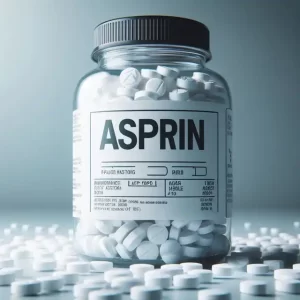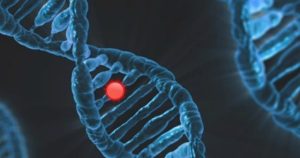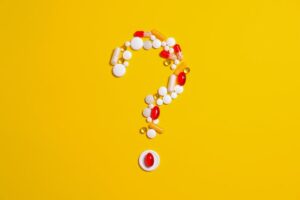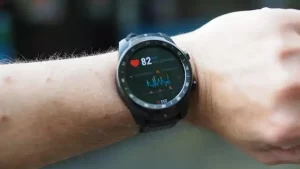Targets of Circadian Rhythm and Progress in Drug Development
- Aspirin: Study Finds Greater Benefits for These Colorectal Cancer Patients
- Cancer Can Occur Without Genetic Mutations?
- Statins Lower Blood Lipids: How Long is a Course?
- Warning: Smartwatch Blood Sugar Measurement Deemed Dangerous
- Mifepristone: A Safe and Effective Abortion Option Amidst Controversy
- Asbestos Detected in Buildings Damaged in Ukraine: Analyzed by Japanese Company
Targets of Circadian Rhythm and Progress in Drug Development
Targets of Circadian Rhythm and Progress in Drug Development. Circadian clock (also known as circadian clock) is an internal mechanism by which organisms adapt to the periodic changes of environmental factors such as light and temperature in the course of evolution. The biological clock of mammals is composed of the main biological clock and the peripheral biological clock.
The main biological clock is located in the suprachiasmatic nucleus (SCN) of the hypothalamus. It is the pacemaker of the circadian rhythm and coordinates the cell oscillator of the whole body through nerve and hormone signals. The peripheral circadian clock is distributed in various tissues and organs, such as liver, kidney, heart, and muscle, with a certain degree of independence.

At the molecular level, the biological clock is composed of a transcription and translation feedback loop containing a variety of genes and proteins, including a core loop and a secondary stable loop, which generates and maintains the circadian rhythm of gene transcription. In the morning, CLOCK (Circadian locomotor output cycles kaput) and BMAL1 (Brain and muscle ARNT-like 1) in the core loop form a heterodimer, bind to the E-box element, and drive the expression of PER and CRY genes.
Subsequently, PER and CRY protein form an inhibitory complex, which inhibits the transactivation of CLOCK and BMAL1. The stability of PER and CRY proteins is regulated by the parallel E3 ubiquitin ligase pathway. At night, the nuclear receptor subfamily REV-ERBα and REV-ERBβ in the secondary stabilization loop act as repressors and compete with the orphan receptors (RORα, RORβ, and RORγ) associated with RAR as activators to bind to ROR/REV- The ERB response element (RORE) promoter element antagonistically regulates the expression of BMAL1 and other target genes.
In addition, D-box is also an important circadian rhythm promoter element, which can be activated by PAR-bZIP protein or inhibited by E4BP4 protein, respectively. In addition, the circadian rhythm is also regulated by post-translational modifications such as phosphorylation, ubiquitination, and acetylation.

Circadian rhythm disorders (caused by insufficient sleep, jet lag, shift work, or overnutrition, etc.) may have short-term or long-term adverse effects on health, and are related to sleep disorders, cardiovascular diseases, metabolic syndrome, autoimmune diseases, and cancer. The function of circadian rhythm also declines with age, which is related to neurodegenerative diseases. Therefore, small-molecule modulators of the circadian clock (SMMCC) target core or non-core circadian clock proteins to regulate the circadian rhythm, which has important potential in the treatment of circadian clock-related diseases, and can also increase the impact on the circadian clock system. Molecular understanding.
Table 1. Small molecule modulators targeting core clock proteins
| Small molecule modulator | Mechanism of action | Pharmacological action |
| CLOCK | ||
| CLK8 | Inhibit the dimerization of CLOCK and BMAL1 and increase the amplitude of circadian rhythm | NA |
| CRY1/CRY2 | ||
| KL001 and stable CRY derivatives (SHP656, KL101 and TH301) | Stabilize CRY, prolong the circadian rhythm, inhibit Bmal1 amplitude | Improve the glucose tolerance of obese mice, inhibit the proliferation of glioblastoma stem cells, inhibit the growth of glioblastoma in vitro, and enhance the differentiation of brown adipocytes in vivo |
| KS15 | Inhibit CRY, enhance E-box-mediated transcription, inhibit circadian rhythm amplitude | Inhibit the growth of breast cancer cells |
| REV-ERB | ||
| GSK4112 | Enhance the interaction between REV-ERB and NCOR peptide | Inhibition of gluconeogenesis and inflammation in primary cells |
| SR9009 and SR9011 | GSK4112 derivative is a selective agonist of REV-ERB, which can change the circadian rhythm behavior, the expression of biological clock genes (BMAL1, PER1 and PER 2) and the expression of some glioblastoma stem cell markers (such as OLIG2 and SOX2) | Improve glucose homeostasis in obese mice, promote wakefulness, anti-anxiety, and inhibit the proliferation of glioblastoma stem cells |
| SR8278 | Antagonists derived from GSK4112 can increase the expression of REV-ERB target genes in cells (such as BMAL1, PCK1 and G6PC1) | Reduce anxiety and improve myocardial damage |
| ROR | ||
| Nobiletin | Agonist, enhances the amplitude and prolongs the circadian cycle | Improve the metabolic homeostasis of obese and diabetic mice, and have a wide range of effects on inflammation and atherosclerosis |
| Neoruscogenin | Agonist, promote the interaction between ROR and NCOA2/TIF2, enhance the expression of BMAL1 | Activate the expression of liver ROR metabolic target genes |
| SR1001 | T0901317 derivative, with high inverse agonist activity and selectivity for RORα and RORγt | Inhibit Th17 cell differentiation and autoimmunity |
| SR2211, SR1555, digoxin, ursolic acid and ML209 | RORγ inverse agonist | Inhibit Th17 cell differentiation |
| SR3335 | RORα inverse agonist | Reduce blood sugar levels in obese mice |
| SR1078 | RORα agonist | Induce apoptosis and inhibit the growth of liver cancer cells |
| RUVBL2 | ||
| Cordycepin | Inhibit the interaction of BMAL1 and RUVBL2 | Improve jet lag in mice |
Table 2. Small molecule regulators targeting non-core clock proteins
| Small molecule modulator | Mechanism of action | Pharmacological action |
| CK1/2 | ||
| CKI-7, IC261, D4476, PF-670462, PF-4800567, longdaysin, LH846, compound 1-3, etc. | Inhibitor, prolong the circadian cycle | Inhibition of CK1 can significantly prolong the circadian rhythm. CK1 is widely involved in various pathophysiological processes, including familial sleep and mood disorders |
| PDE4 and MAPK | ||
| Rolipram | PDE4 selective inhibitor | NA |
| U0126 | MEK specific inhibitor | NA |
| AMPK | ||
| Metformin | AMPK agonist, interferes with the expression pattern of circadian clock genes and metabolic genes | Type 2 diabetes drugs |
| GSK3β | ||
| lithium | GSK3β inhibitor. GSK3β can phosphorylate CLOCK, PER, REV-ERBα and CRY proteins | Treatment of bipolar disorder related to circadian rhythm disorders |
| ADORA2B | ||
| BAY 60-6583 | ADORA2B agonist, stabilize PER2 | Enhance adenosine signal transduction and have cardioprotective effects against myocardial ischemia |
| CDK | ||
| Indirubin-3’-oxime、Kenpaullone、Roscovitine和Puralanol A | CDK inhibitor, prolong the circadian cycle | NA |
| BALL | ||
| Camptothecin and Harmine | TOPI inhibitor, prolong the circadian cycle | NA |
| melt | ||
| Etoposide、Mitoxantrone和Amsacrine | TOPII inhibitor, shorten the circadian cycle | NA |
| SIRT1 | ||
| SRT2183 and SRT1720 | SIRT1 agonist, reduces circadian rhythm gene expression | NA |
| SRTCD1023 and SERTCL1015 | SIRT1 agonist, prolongs the circadian cycle and reduces the amplitude | NA |
| IS | ||
| 17β-estradiol | Shorten the circadian cycle | NA |
| PPAR , RAR and RXR | ||
| Rosiglitazone | PPARγ agonist, enhance BMAL1 expression, regulate cardiovascular rhythm | NA |
Circadian rhythm plays an important role in drug development and clinical treatment. Time therapy is based on the biological clock, that is, to determine the appropriate administration time within the precise circadian rhythm time window to obtain better pharmacokinetic properties, improve drug efficacy, and reduce toxicity related to drug metabolism. Related cardiovascular diseases (such as hypertension, etc.) and autoimmune diseases (such as rheumatoid arthritis, etc.) play an important role in the treatment.
The biological clock is a complex multi-loop feedback regulation network. Agonists or inhibitors that act on the same target can be both beneficial and harmful. When evaluating the pharmacological effects of small molecule regulators of the biological clock, the continuous pharmacological effects of the compounds should be comprehensively investigated.
(source:internet, reference only)
Disclaimer of medicaltrend.org



